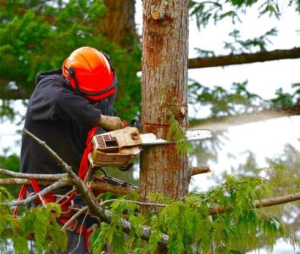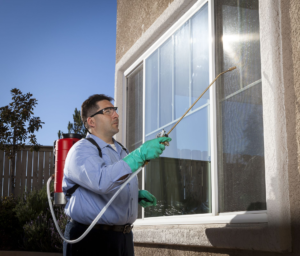Relocating can be a stressful time, but it’s also a great opportunity for personal and professional growth. Taking the right steps will help you make the transition more manageable.

Look for movers who offer full-service moves and have extensive experience in the industry. In addition to the company’s credentials, ask for a physical inspection of your home and its contents. Contact Movers Idaho Falls for professional help.
Whether you’re a family moving to another part of town, a business relocating across the city, or someone upgrading from an apartment to a house, you’ll likely incur some additional expenses along the way. You may not think of these costs when you first start planning your move, but they can add up to a significant bill. These extra fees can include packing supplies, non-refundable application fees, and any penalties you might face for breaking a lease early. You’ll also have to pay for movers if you’re moving long distance.
The cost of hiring residential movers can vary depending on the distance of the move and the size of the home. In addition, movers charge for fuel, insurance, and any other services you request. Typically, moving companies will charge an hourly rate for labor and a flat fee for the truck. They may also charge for a full valuation and packing service, if necessary. It’s best to get a quote before the moving day to avoid surprises.
When choosing a mover, make sure to look at their website or call them for a free estimate. Many moving companies will break down their rates and charges to show customers exactly what they’re paying for. They may list a flat per-hour rate, a per-person rate, or a blanket hourly cost for the entire moving team. They may also list the cost of a rental truck and other equipment. They may also charge for storage fees or any other services you need, like disassembling and reassembling items.
Some items require special care and can significantly increase the cost of moving them. For example, pianos or hot tubs may need to be disassembled and reassembled, while antiques or cars may need to be crated. Adding these costs to your total will help you understand the true cost of your move.
You may also need to pay for other hidden costs, such as utility and cable fees. These can add up quickly and are often overlooked until it’s too late. You should check with your utility company and cable provider to find out how much you’ll be charged to disconnect and reconnect services.
Time of Year
The best time of year to move to a new location depends on personal circumstances and preferences. The weather, school schedules, and availability of moving companies all affect the timeline and cost of a move. The best time to move is usually from late September through April when movers are in less demand and prices are lower. Moving during the weekend tends to be more expensive than a weekday, as many movers are booked up on weekends due to lease expirations and closing dates on home sales.
The spring and summer months are popular times to move because kids are out of school, making it easier for them to adjust to a new environment. However, this may be problematic if you are moving to a different school district or city and your children will miss their friends and classmates. Additionally, the peak moving season of May through September is often the most expensive time to move.
Moving in the fall or winter can be challenging because of the weather conditions. Winter can be very cold, and ice and snow could make the roads dangerous to drive on. Depending on your location, moving in the winter may also mean dealing with unpredictable weather or being forced to move during a holiday or family event.
The early spring is an ideal time to move because it’s typically cooler than other seasons, and you can use the mild weather to help you unpack and settle in your new home. This is also a good time to host a garage sale to get rid of items you don’t want or need anymore and earn some extra cash to help with the costs of moving. In addition, spring is when the housing market picks up and homes become more affordable, so you might be able to find a great deal on your new home. However, moving in the spring can also be a challenge because of rain and pollen, which can disrupt your move and trigger allergy symptoms.
Packing
When it comes to packing items for shipping, a good process is critical. It can minimize damage rates, optimize shipping costs, and improve customer satisfaction. To implement a successful packing process, businesses need to assess the nature of their products and choose suitable packaging materials. They also need to ensure that items are securely arranged to prevent movement during transportation. Proper packing can also help increase warehouse efficiency and reduce labor costs.
When packing for a move, start by getting rid of items you don’t need. This will make the process of packing easier and faster. You can sell or donate these items or put them into a garage sale. Once you have done this, start by packing items that you use frequently. Make sure to group similar items together, such as books and clothing. This will make it easier to find them when unpacking at your new home. For delicate items, use bubble wrap and newspaper to protect them from scratches. You can also use blankets or sheets to protect fragile items, such as mugs and plates. It’s also helpful to have a handcart available, as this will help you lift heavy boxes and reduce the risk of injury.
If you have a lot of items to pack, try to do them in stages. This will allow you to focus on one room at a time, which will make the process more manageable. It’s also a good idea to label boxes clearly, with the destination room and whether or not they’re fragile. This will save you a lot of time and stress when unpacking at your new home.
It’s important to know how to pack a moving truck properly so that your belongings are safe during transit. This involves using proper padding, securing items to the truck’s walls, and loading them strategically to avoid shifting during transport. It’s also a good idea not to move any hazardous items, such as flammable liquids or chemicals. These items may be difficult or dangerous to transport, and they could pose a fire hazard or damage the vehicle.
Transportation
The transportation process involves moving goods and people from one place to another. This can be done by train, plane, boat, car, or truck. It is a vital part of the economy. The growth of the ability to transport large amounts of goods over long distances has been a sign of civilization and technological progress. The demand for transportation is driven by the need to move goods to their destination, as well as the need to travel for work, business, or pleasure. Transportation systems are complex, consisting of many components, including routes, terminals, and vehicles.
There are several ways to classify transportation modes: by whether they transport passengers or freight; by how they are powered; and by how they follow fixed routes. Passenger transport is divided into public and private transportation. Public transport uses scheduled services on fixed routes, whereas private transport provides ad hoc services at the rider’s request. Freight transport is divided into general cargo and bulk cargo. General cargo includes packaged products such as manufactured goods and foodstuffs. Bulk cargo consists of low-value, high-volume products such as ores, grains, coal, and petroleum products.
Besides the means of transport, transportation is also divided into terminal and line-haul costs. Terminal costs are those incurred in loading and unloading passengers or goods into and from the vehicle. The transfer between vehicles, such as when transferring from air to land transport at an airport, is also a terminal cost. Line-haul costs are those incurred in moving goods or passengers over long distances. These costs are proportional to the distance of the haul and time.
A transportation system is made up of facilities, equipment, and carriers. The most important facilities are roads, railways, and sea/ocean ports. They serve as the backbone of the transportation system. They connect cities and regions, enable the movement of goods and services, and allow for the efficient distribution of resources. The transport system is further supported by a network of railway stations, highways, and local roads.
The most significant limitation of the transportation system is the amount of energy it uses. This is a major reason for the need to shift to renewable fuels and to increase transport electrification. Environmentalists also emphasize the need for less polluting modes of transport, such as cycling and walking.








